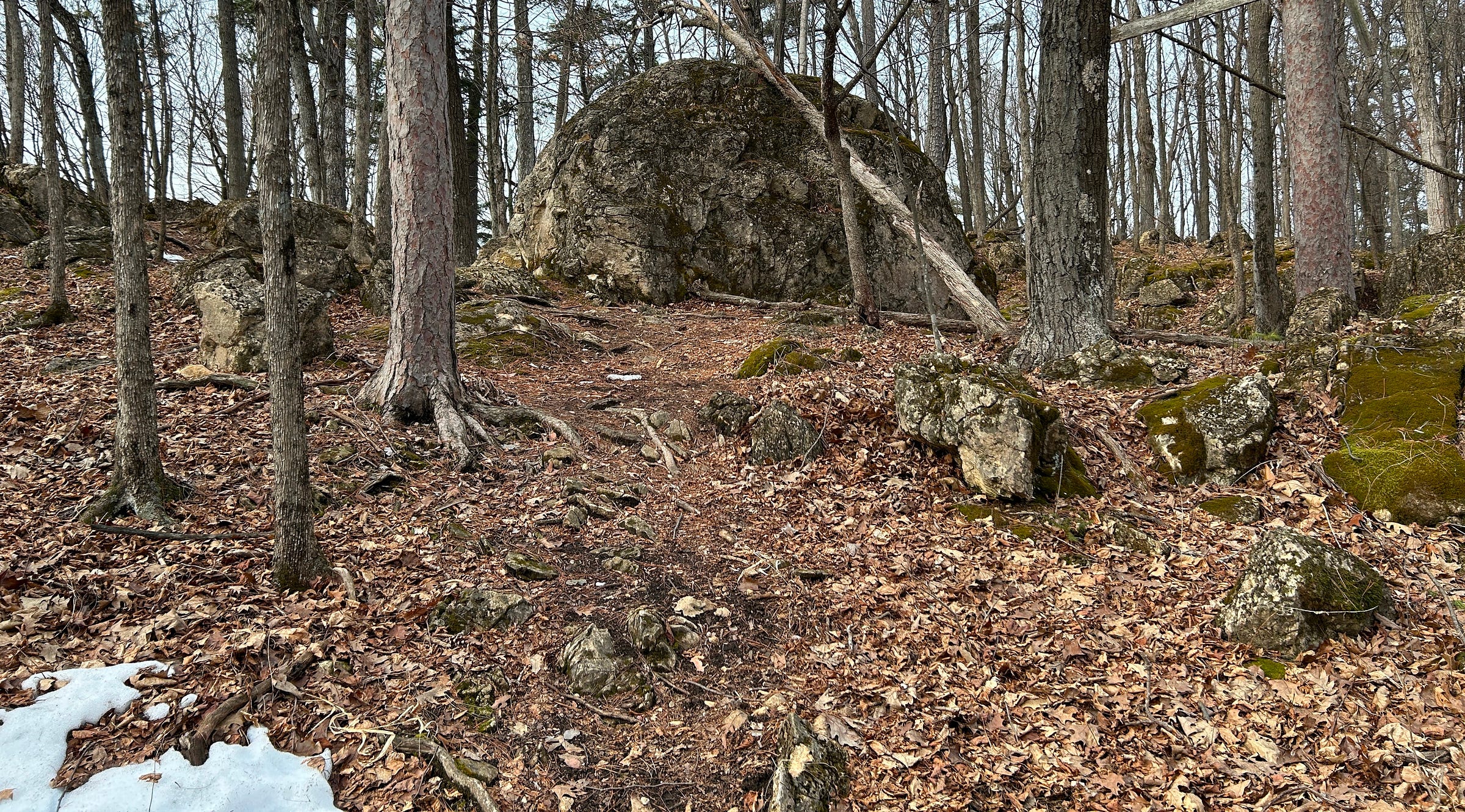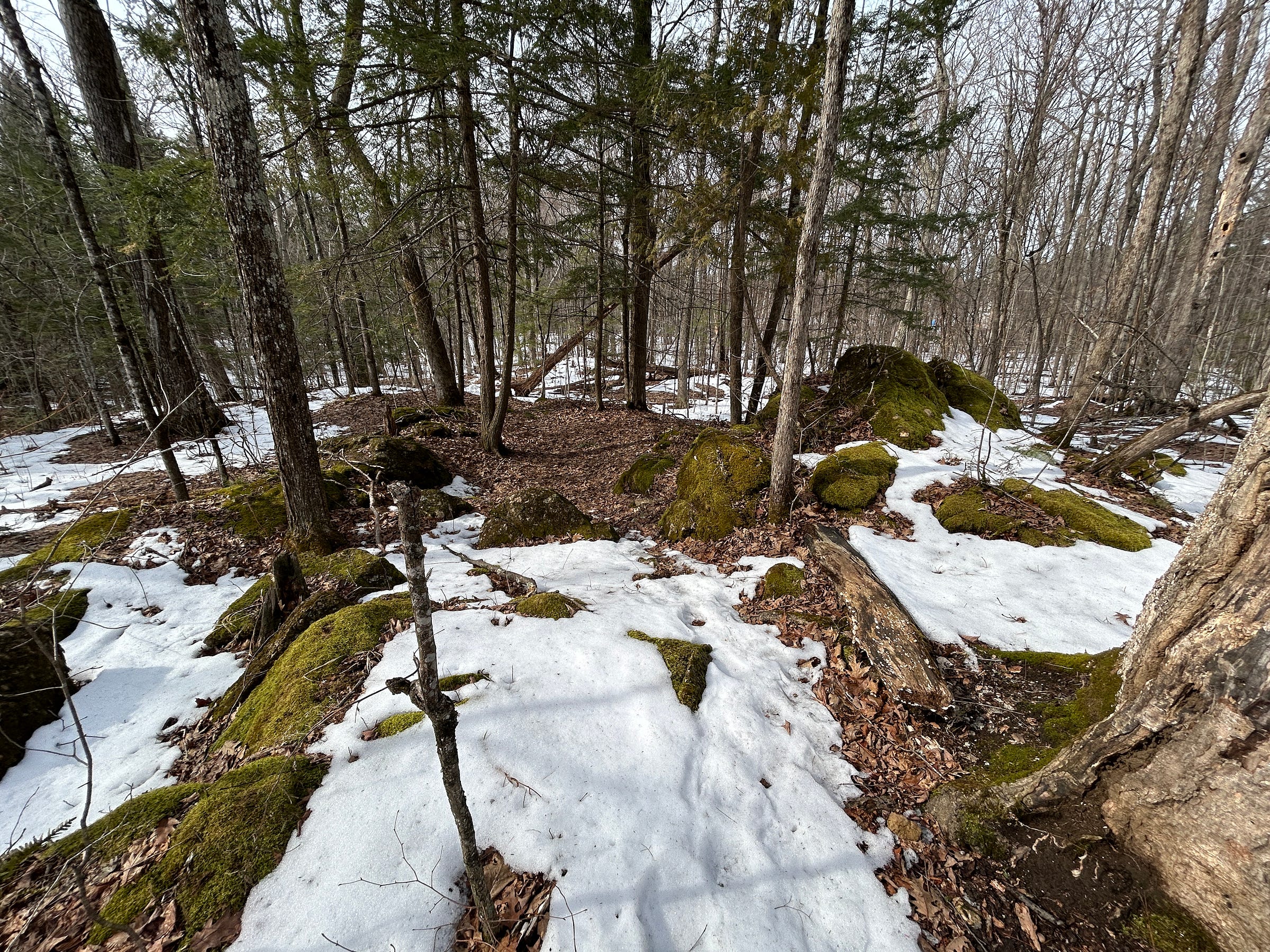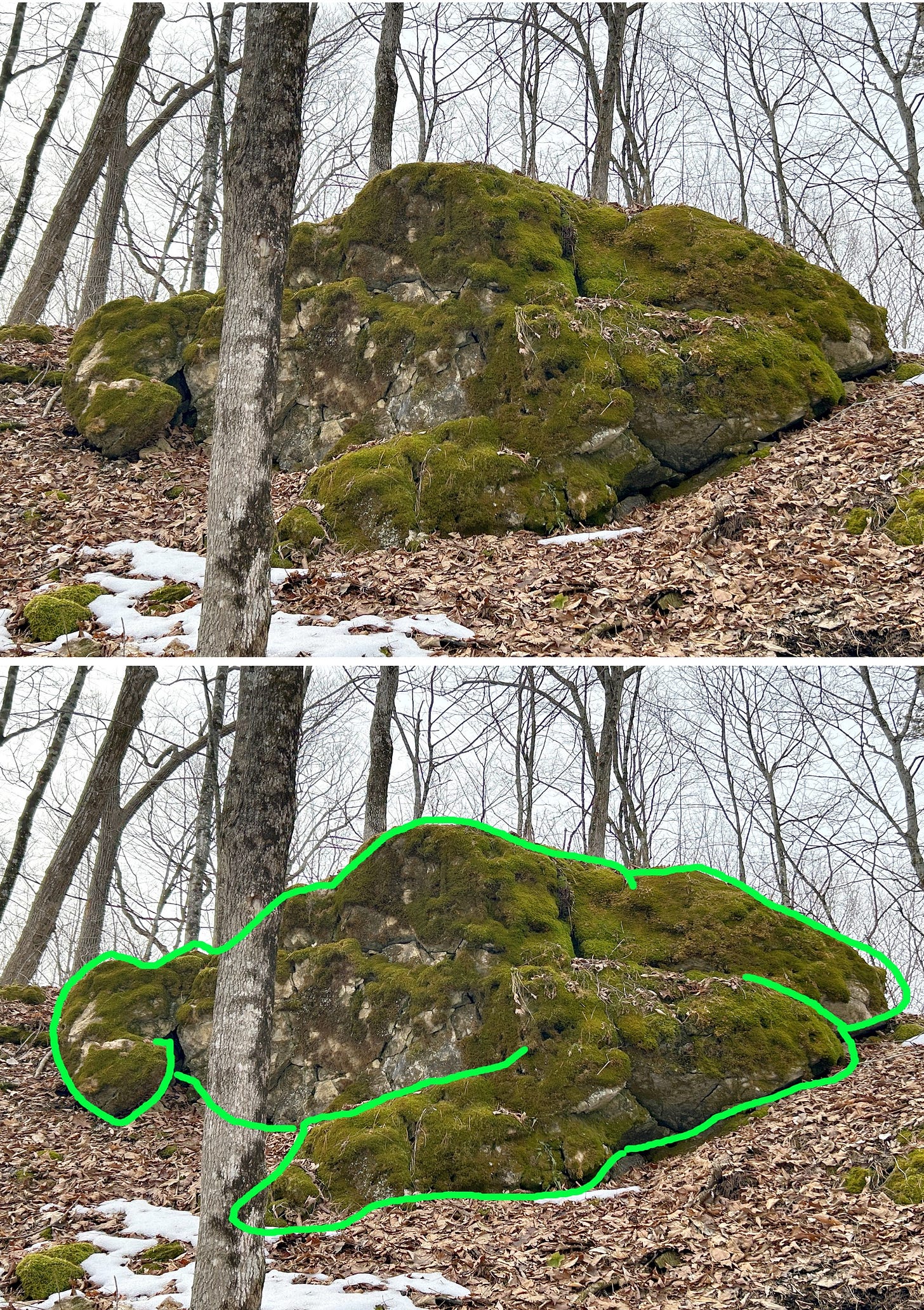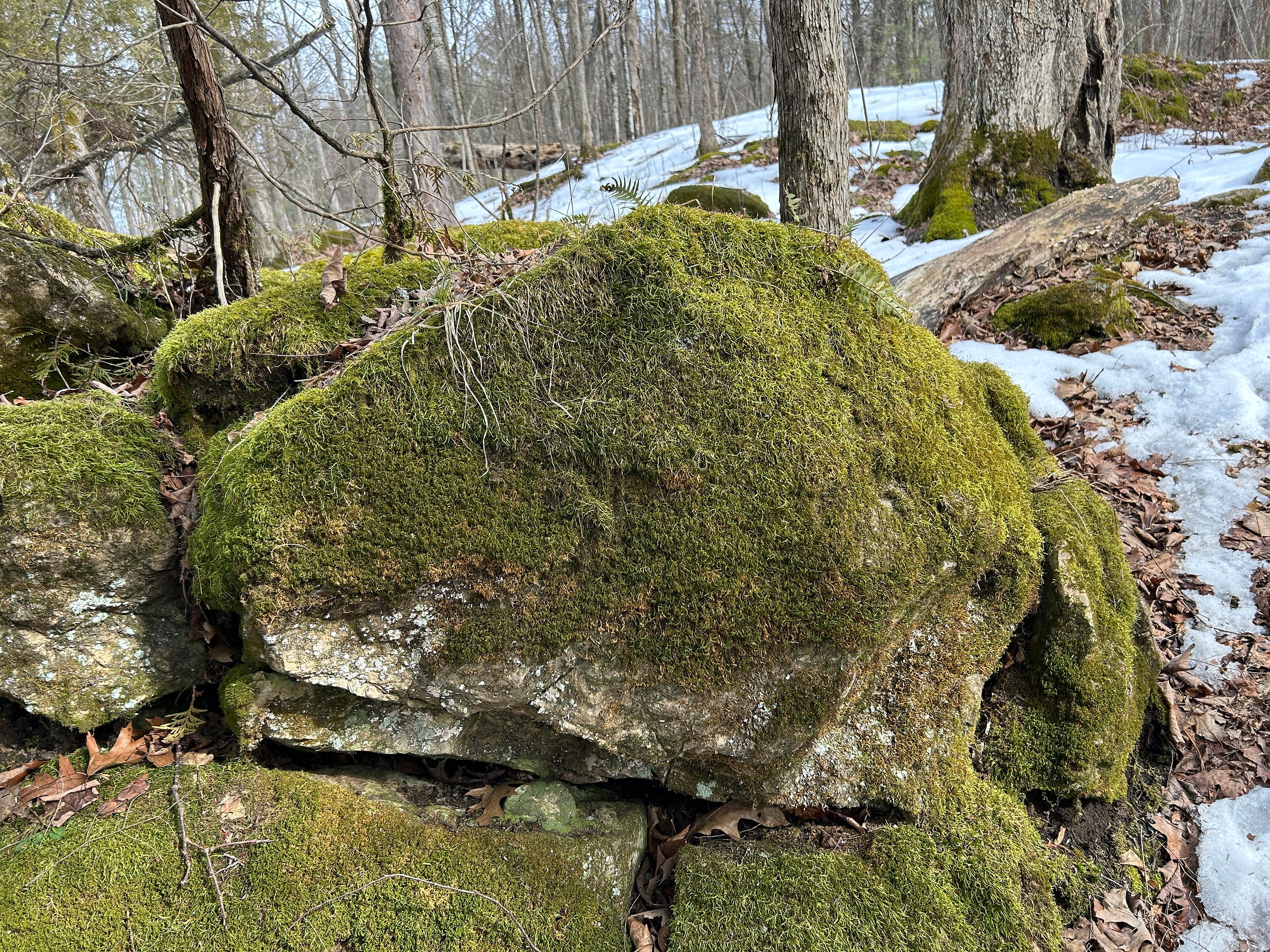Another Look At Speculative Stonework-Forms in Arms Forest - Part One
Potential But Nearly Impossible to Prove Effigy Forms in Burlington, Vermont
I want to open this post by backing up a bit, before sharing some of Thursday’s sights with you, to talk a little about what happens when you begin to see stonework differently. Once you start to see possible elements of Indigenous Ceremonial Stone Landscapes in the Northeast, and learn what to look for in terms of suggested designs and structures, there’s no going back — you cannot “unsee” these things.
It’s like the movie They Live by John Carpenter, in which “Rowdy” Roddy Piper plays a guy who gets special sunglasses that let him “see” that the ruling elite are actually aliens masquerading as people. Can’t really undo that. Once you know, you know. And once you’re aware of the existence of Sacred Indigenous Stonework, you also experience reality differently, or at least look at it differently.
However, as our minds open up to the potentially more complex stone landscape surrounding us, there can be a sort of over-correction which occurs, in which too much appears human-made or altered, and pareidolia — our brain’s tendency to see order and animate forms in inanimate objects, like shapes in clouds — leads us to perceive potential wonders which aren’t really there — to see natural forms as being constructed, for example. Or to too easily see — subjectively speaking — large boulders as zoomorphic or anthropomorphic effigy forms, features which are extremely difficult to prove.

Long-time Stonework Investigator Peter Waksman (Of the Rock Piles Blog) refers to a similar sort of outlook as “Magical Thinking” in his book A Shadow Under the Rock, “trying to describe the state of mind of a person who has been walking in the woods their entire life and suddenly learns there is something completely new to look at… trying to reconstruct a reality without any information being available other than the traces left behind.” (p. 67)
Granted, we know a bit more, now, than when Waksman was starting out in the early nineteen-nineties, thanks to the involvement of Indigenous communities and communicators willing to share insights, like Retired Narragansett Deputy Tribal Historical Officer Doug Harris and Archaeologist and Ethnobotanist Nohham Cachat-Schilling, Mohawk-Nashaue keeper of traditional medicine and narratives. And thanks to the efforts of numerous other archaeologists, antiquarians and amateurs working in this area, like many affiliated with NEARA (New England Antiquities Research Association).
Still, one can experience a sort of wide-eyed, open-minded enchantment of possibilities as one initially takes in the stonework, which isn’t necessarily a bad thing, even if one is seeing forms which might not actually be present in the stones.
It’s a learning process — as you become more informed, so do your perceptions.
The alternative also exists — maybe you are seeing something truly present, and previously overlooked. What if there is stonework we haven’t yet learned to perceive?
What if there is more to see? What if Geology has, in the past, explained too much away as simply the work of Nature, thanks to mistaken assumptions about a Pristine Wilderness and racial biases against the intelligence and ingenuity of the Indigenous populations underlying the conclusions of eighteenth and nineteenth century Naturalists of European descent?
Now that we know that millions of capable, industrious people lived here for twenty-thousand years or more, manipulating and changing their landscapes and environments over thousands of years, perhaps human agency should be more often considered as a parsimonious explanation for the state of some “Rock Formations”.
For example: Geological consensus credits the placement of large boulders perched or “pedestaled” on three or four smaller stones to the settlement of icy debris as the glaciers melted and retreated. When those boulders have been transported some distance by the ice, they’re called “Glacial Erratics” as they’re technically out-of-place.
This is an entirely plausible and sound scientific explanation, describing events that occured at least eleven-thousand years ago. But is it the only explanation?
Geological consensus seems to demand that it is.
For me, this strains credulity. With millions of people ranging over the landscape of what we now call the Americas for ten-thousand, maybe twenty-thousand years, could we perhaps grant that some “perching” may have been the work of people? Perhaps they simply re-positioned or perched Erratics which were already present? Humans prop things up and knock things down, they’re things we do. It doesn’t seem that far-fetched to credit Indigenous humans with doing the same with some of the Erratics.
Consider the cultural impact, how Indigenous folks might have interpreted naturally perched boulders they encountered ten-thousand years ago. Or at any time between now and then. Would they have assumed it was Natural? The work of some Natural Power? Might they have attempted to replicate this natural phenomenon at some point between then and now, over the ten-thousand or so intervening years?
These seem like legitimate questions.
These Perched or Pedestaled Boulders are only one example of possible human work which has been explained away as Natural and erased.
Though I’ve found a few pieces of Speculative Stonework in Arms Forest, I’m not aware of any Perched Boulders like those just described, in this area. Still, the Speculative Stonework features I’ve found in Arms Forest, often created out of existing stone outcrops, are, like Perched Boulders, candidates for dismissal by skeptics.
Some may charge that it’s simply my own pareidolia.
There is still a lot of snow cover in Vermont, though I’m hoping temperatures in the 60s this weekend will thaw things out and reveal some stonework. Neighborhood lawns in the city of Burlington no longer hold much, just muddy snowbank remnants curbside, but experience teaches there’s always more left on the ground inland, away from the lake, than there is in town. That’s why I opted for nearby Arms Forest in Burlington for an afternoon’s exploration on Thursday, though I was also looking at a new potential place to check out in Essex.
Arms Forest, also known as Arms Park, is an “Urban Wild” up next to the lake in the North End of Burlington, behind the High School, some houses, a church and the Elks Club, all along North Avenue. It’s near the Sea Caves — were you to climb up the cliff around the entrance to the Sea Caves, up onto the North End Plateau, and then head toward the lake, you would be heading through Arms Forest.
As it turned out, even up there next to Lake Champlain there was still an inch or two of crusty, melting snow beneath the tree cover. The forest’s well-trodden trails had melted down to a lumpy ice surface with a shallow coating of meltwater, making for slow going in spots. I knew it couldn’t have been any better further inland.
I’ve gotten to know Arms Park/Forest better over time, having trodden the trails there a few times, and documented possible finds in several videos and posts.
Videos on the Ancient Stone Mysteries of New England YouTube Channel:
Posts on the Ancient Stone Mysteries Substack Newsletter:
And an Article on Medium:
Did Desecration Doom Two Schools?
https://medium.com/@glowinthedarkradio/did-desecration-doom-two-schools-87bf6b18b289
Thursday afternoon, I came across one or two potentially new-to-me finds, though I will caution you, like most everything else I “see” in Arms Forest, not everyone will agree that these “finds” are anything at all.
This first new ridgetop Stone Feature had the aspect of a fish, and could perhaps have been seen as a Fish Effigy. This outcrop appears to have seen some human help in the distant past to make it appear to be a fish of some kind. This seems to be a repeated design form in this area, as you’ll see.
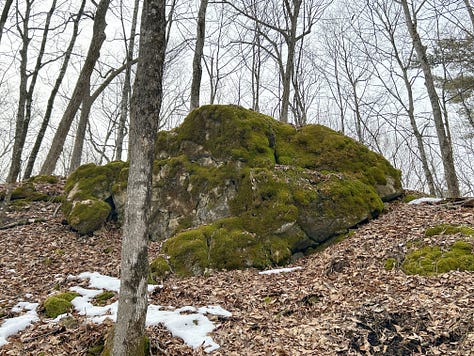
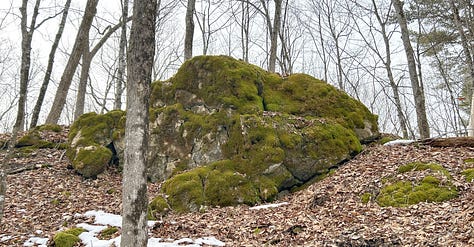

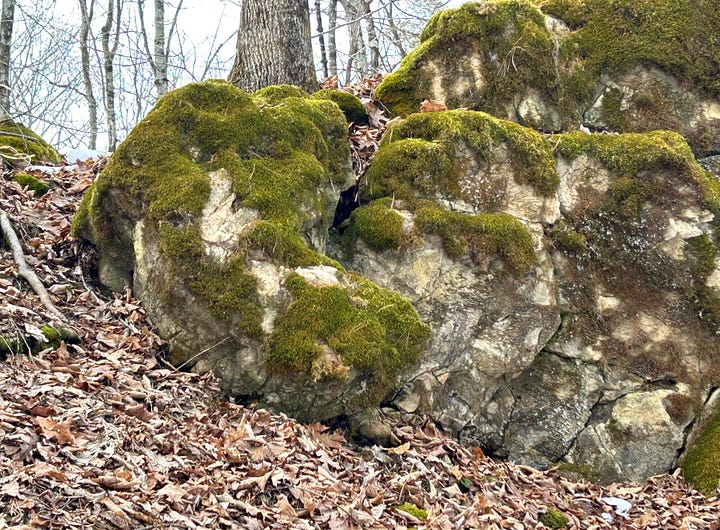

Sometimes, although not 3D, video can provide a better sense of size and dimension on shapes such as this:
Most of the other Potential Stone Features I saw Thursday were ones I’ve come across in the past. As I took them in anew, I tried to keep my eyes open for anything I may have missed on my previous visits.
This stone assemblage also appears to have been altered and embellished to evoke a Fish form, and may also be a Fish Effigy. I found it particularly striking when I first came across it a couple of years ago.

Once again, video might provide a better representation of this possible stone feature. This footage gives you a bit of an extended look:
The “Tail” is especially interesting to me, as it appears these stones were added, and likely chosen for their shapes, or shaped.
Again, this is highly speculative on my part. I’ve tried to provide clear photos and videos so you can zoom in, look around, and ponder the possibilities yourself.
This sort of Speculative Stonework isn’t what I went looking for when I went searching for Ancient Stonework in our woods and forests. Never thought I’d be advancing these ideas, the suggestion that what I’m showing you are ancient Effigy forms, until I saw this stuff in the field. Looking closer didn’t dispel my curiosity but instead raised many new questions. I couldn’t “un-see” it. It certainly seemed to be more than pareidolia or Waksman’s “Magical Thinking”.
In researching answers, I found Geology’s consensual dismissals that “all of this” was just Nature at work over-general and unconvincing, given my experience in masonry and graphic design. These over-broad dismissals also didn’t seem to take into account the relatively recent discoveries of larger Indigenous populations and greater environmental manipulation across thousands of years in the Americas than previously assumed, nor, in turn, that this was never a “Pristine Wilderness”.
In light of this, it doesn’t strike me as that outrageous to suggest that these are stonework effigies, though it may be impossible to prove, as too much of the case is built on subjective impressions, perceptions and interpretations.
There’s more to share from this trip to Arms Forest, but I’ll wrap this initial report up here for now. Finishing this up on Saturday night — and today I went further inland, into Williston, to hike and look for stonework.
Just as I thought… there was still a great deal of snow out there.





